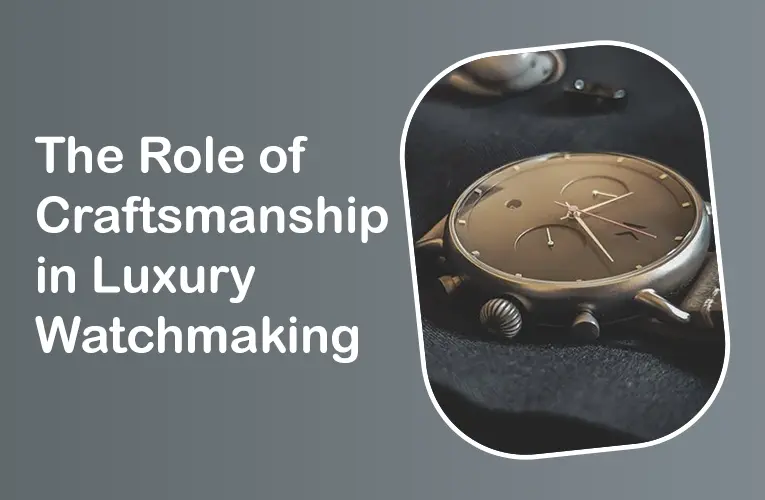The Role of Craftsmanship in Luxury Watchmaking
Introduction
Luxury watchmaking is an art form that transcends mere timekeeping. It is a symbiosis of intricate engineering, artistic design, and meticulous craftsmanship. As the world of horology evolves, the fundamental role of craftsmanship remains a cornerstone of the industry. This article will guide you through the intricate processes and the human touch that define luxury watches.
The Foundation of Luxury Watchmaking
The Heritage of Craftsmanship
Luxury watchmaking is deeply rooted in tradition. Renowned brands like Rolex, Patek Philippe, and Audemars Piguet have maintained their reputations by preserving the age-old techniques that first established their names. These techniques include hand-finishing, manual assembly, and complex mechanical movements.
Keywords: Luxury watchmaking heritage, traditional watchmaking techniques, hand-finishing watches
The Importance of Precision
Precision is the hallmark of any luxury watch. The ability to measure time accurately is fundamental, and this is achieved through rigorous craftsmanship. From the balance wheel to the escapement mechanism, every component is crafted with meticulous care. High-end brands often employ master watchmakers who spend years perfecting their skills to ensure each piece meets the highest standards.
Keywords: Watch precision, high-end watch accuracy, master watchmakers
The Art of Craftsmanship
Manual Assembly: The Human Touch
Manual assembly remains a defining feature of luxury watches. Unlike automated processes, manual assembly involves skilled artisans meticulously placing each component by hand. This labor-intensive process ensures that every watch is unique, with a level of attention to detail that machines cannot replicate.
Keywords: Manual watch assembly, artisan watchmakers, handcrafted watches
Decorative Techniques
Luxury watches often feature intricate decorative techniques that enhance their aesthetic appeal. These include:
- Engraving: This involves carving intricate designs into the watch case or movement, often by hand.
- Côtes de Genève: A pattern of parallel stripes applied to the movement to enhance its visual appeal.
- Perlage: A decorative technique where small, circular patterns are created on the movement’s surface.
These techniques not only add to the visual allure of the watch but also showcase the skill of the craftsmen involved.
Keywords: Watch engraving, Côtes de Genève pattern, Perlage watch decoration
Innovations in Craftsmanship
Combining Tradition with Technology
Modern luxury watchmaking often combines traditional craftsmanship with cutting-edge technology. For instance, the integration of advanced materials such as ceramic and silicon into watch movements demonstrates how innovation can complement traditional methods. These materials offer enhanced durability and performance, showcasing the evolving nature of craftsmanship.
Keywords: Advanced watch materials, ceramic watches, silicon watch movements
The Role of CAD and 3D Printing
Computer-aided design (CAD) and 3D printing have revolutionized the watchmaking industry. These technologies allow for precise prototyping and the creation of complex components that were previously impossible to achieve. However, the final assembly and finishing of these parts still require the expert hands of skilled artisans.
Keywords: CAD in watchmaking, 3D printing watches, watch design technology
The Value of Craftsmanship
The Impact on Pricing
Craftsmanship plays a significant role in the pricing of luxury watches. The extensive labor and skill required to create a high-quality timepiece translate into higher costs. This pricing reflects not only the materials used but also the time and expertise invested in the watch’s creation.
Keywords: Luxury watch pricing, value of craftsmanship, high-end watch cost
Resale Value and Collectability
Luxury watches with exceptional craftsmanship often have higher resale values. Collectors and enthusiasts are willing to pay a premium for watches that demonstrate superior artistry and engineering. Limited editions and watches with unique features can become highly sought-after items, further enhancing their value.
Keywords: Watch resale value, collectible watches, limited edition timepieces
The Future of Craftsmanship in Luxury Watchmaking
Sustainability and Ethical Practices
As the industry evolves, there is a growing emphasis on sustainability and ethical practices. Brands are increasingly focusing on sourcing materials responsibly and reducing their environmental impact. Craftsmanship in this context also means adhering to ethical standards and ensuring that the watchmaking process respects both people and the planet.
Keywords: Sustainable watchmaking, ethical luxury watches, responsible sourcing
The Digital Age and Craftsmanship
The digital age presents new challenges and opportunities for luxury watchmaking. While digital tools enhance design and production efficiency, there remains a place for traditional craftsmanship. The balance between embracing technological advancements and preserving artisanal techniques will shape the future of the industry.
Keywords: Digital tools in watchmaking, future of craftsmanship, technology in luxury watches
Conclusion
Craftsmanship is the soul of luxury watchmaking, intertwining tradition with innovation to create timepieces that are both functional and exquisite. The meticulous attention to detail, the skill of master artisans, and the fusion of old and new techniques all contribute to the allure and value of luxury watches. As the industry continues to evolve, the essence of craftsmanship will remain a defining characteristic, ensuring that these timepieces retain their status as symbols of precision and elegance.









